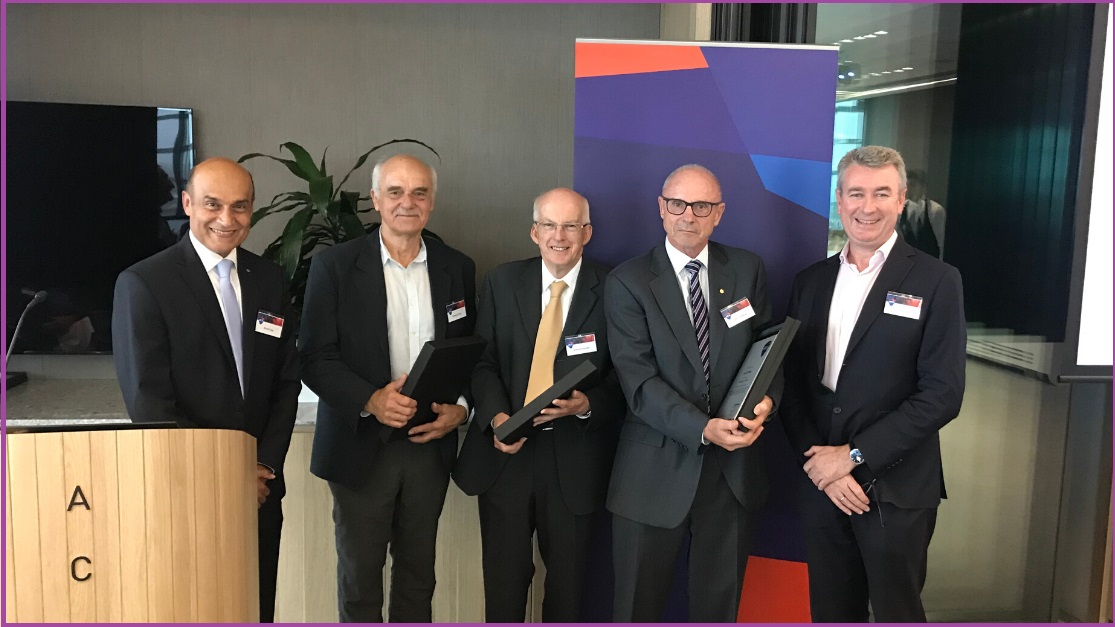Four of the CSIRO scientists responsible for the invention of WiFi were awarded ACS Honorary Fellowships at a special Fellows Dinner held at ACS’s Sydney Innovation Hub last Wednesday.
The pioneering scientists – John O'Sullivan, John Deane, Graham Daniels and Diethelm Ostry – were honoured at the event by Dr Ian Oppermann, Chief Data Scientist, NSW Department of Customer Service and ACS Vice President for Academic Boards.
John Deane joined CSIRO Radiophysics in 1974 to support the Division’s sole computer. In 1991, Mr Deane took over software development of the wireless networking testbed and contributed to international conferences resulting in the IEEE inviting him to participate in their standardisation activities. This culminated in the IEEE 802.11 ‘WiFi’ local networking standard of 1999.
Dr John O’Sullivan played an important early role in the initial conception of the Australia Telescope receiving systems, having joined the project in 1983. He was primarily charged with setting up a new Signal Processing group at CSIRO’s Division of Radiophysics. After his demonstration of the Wireless LAN system, Dr O’Sullivan left CSIRO in 1995 to join News Ltd as their Australian Director of Technology. He was also Radiata’s Vice President of Systems Engineering and worked on the design of the Square Kilometre Array.
Diethelm (Diet) Ostry joined the CSIRO Radiophysics Division in 1973 initially as a scientific programer to support the Interscan project which was aimed at developing a precision microwave landing system which became the Interscan aircraft landing system. Since 2006, Mr Ostry has mainly focused on optical networks and developing secure communications protocols for wireless sensor networks.
Graham Daniels worked between 1974 and 1991 as a Senior Design Engineer and System Architect for Summit Electronic Systems and Summit Communications on data communications, security, and industrial control products based on embedded microprocessors. Many of these products were intended for remote or unattended operation, so an area of particular significance was resistance to transient faults and to hardware/software tampering.
The invention of WiFi imprinted Australia's innovative genius on the world map and paved a pathway for the country's future innovators, scientists and technologists.
First embodied in an industry standard in 1999 and later across other standards, Wifi is now the primary means of connecting computers without wires. Since its creation it has wirelessly connected billions of electrical and electronic devices including printers, game consoles, TV sets and phones.
Creating the invention involved complex mathematics and detailed knowledge about radio waves and their behaviour in different environments. With many others worldwide attempting to solve the same problem, the group succeeded where many other leading communications companies were failing.
The outstanding research and development of the invention has attributed a significant value and return to Australia, while being widely recognised internationally and has brought attention to the capability and innovative genius of Australia’s technology and scientific specialists.









